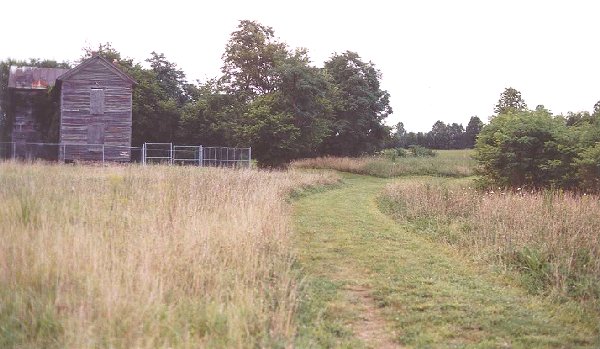
Brawner Farm
August 28, 1862
After Lee defeated McClellan in the Seven Days Campaign, Pope's Army of Virginia remained a threat in Northern Virginia. Jackson was sent north to protect the vital rail center at Gordonsville. After Jackson narrowly defeated one of Pope's three corps at Cedar Mountain, Lee decided to take the rest of his army north. McClellan's army was withdrawing from the Peninsula and Lee had to defeat Pope before the two joined. Pope's 55,000 and McClellan's 90,000 men could together muster 140,000 men to Lee's 55,000. After a failed attempt to move into Pope's rear, Lee faced his enemy across the Rappahannock.
On August 25, 1862 Jackson's corps began the march around Pope's army, and Longstreet's corps followed the next day. On August 27th, Jackson's men plundered the Union warehouses at Manassas Junction while Pope moved to "bag" him. Pope failed to surround Jackson, who escaped north to a defensive position along an unfinished railroad. Pope also failed to block Longstreet's corps at Thoroughfare Gap, which would have allowed him to defeat Jackson and Longstreet in detail. Jackson feared Pope would withdraw and join McClellan, so when Jackson saw King's division of Federals marching east along the Warrenton Turnpike, he decided to attack.

Brawner Farm
With the sound of approaching troops, Jackson galloped off to the Warrenton Turnpike to within easy musket range of the Yankees to thoroughly inspect the puzzled Yankees. Jackson returned to his 24,000 man command and ordered an attack. Confederate artillery harassassed the Federals. Union artillery responded, but the commander of the Union division, Rufus King, suffered an untimely epileptic attack. John Gibbon commanded the 2nd Wisconsin of his brigade to advance on the enemy battery at Brawner Farm. As the regiment reached musket range of the battery, the gunners fell back. Almost immediately, the 800 man Stonewall Brigade advanced against them. Despite heavy fire, the Stonewall Brigade moved to within 80 yards before halting and opening fire. Outnumbered and with threatened flanks, the 2nd Wisconsin commander requested reinforcements, and the 19th Indiana joined them after 20 minutes. Jackson also sent in more men and extended the line eastward. This picture is from the Union line looking toward the Confederate line. At the time, this was the Brawner's orchard. Fighting raged indecisively here for some time, with casualties mounting on each side with for no visible benefit, ending only when the Confederates flanked the line off the picture to the left as darkness fell.

Campbell's Guns
As the battle shifted eastward, the 6th Wisconsin moved across this field to the creek bed at the foot of the hill toward the right of the picture. Here, they met and stopped the advancing Confederates of Trimble's brigade. The fight soon degenerated into an 80 yard slugfest. The guns pictured here were those of Campbell's battery, which supported the infantry. A 700 yard gap existed between the 6th Wisconsin and the rest of Gibbon's brigade, but approaching darkness helped hide this from the rebels. The 76th NY and 56 Pa. of Doubleday's brigade came to fill the gap. Fighting continued, with the Confederates get the worst of it on the distant hillside, since they were more likely to aim too high.

From Union Rear at Brawner Farm
With a stalemate and low light, Jackson sought to end the fight. A.G. Taliaferro's brigade was sent against the Union flank at the Brawner Farm while Confederates made another rush along the front. Trimble's men reached within 30 yards of the Union position but were stopped. The 26th Georgia of Lawton's brigade sustained 72% casualties. At the Brawner Farm, Pelham's battery opened up on the Yankee flank at 100 yards. The Yankees withdrew several yards to a two foot swell in the ground, and stopped Taliaferro's brigade at 200 yards.
The battle ended with darkness. The next day, the troop positions could clearly be seen by the numerous dead. The Stonewall Brigade lost 340 of its 800 men, or 40%, and in all. Ewell was wounded, and one-third of the men on each side were casualties. Jackson should have been able to destroy the enemy division, but he and his division commanders had failed. Jackson had succeeded in luring Pope into battle. The next day, in the Battle of Second Manassas, he would barely hold his position against an incompetent Pope, but on August 30th, Longstreet would attack and nearly destroy a Union army.
topo map The Brawner Farm is located northeast of the number 286 at the end of a dashed road. The picture from Campbell's battery was taken looking north from Battery Heights.
Back to Civil War Virtual Battlefield Tours